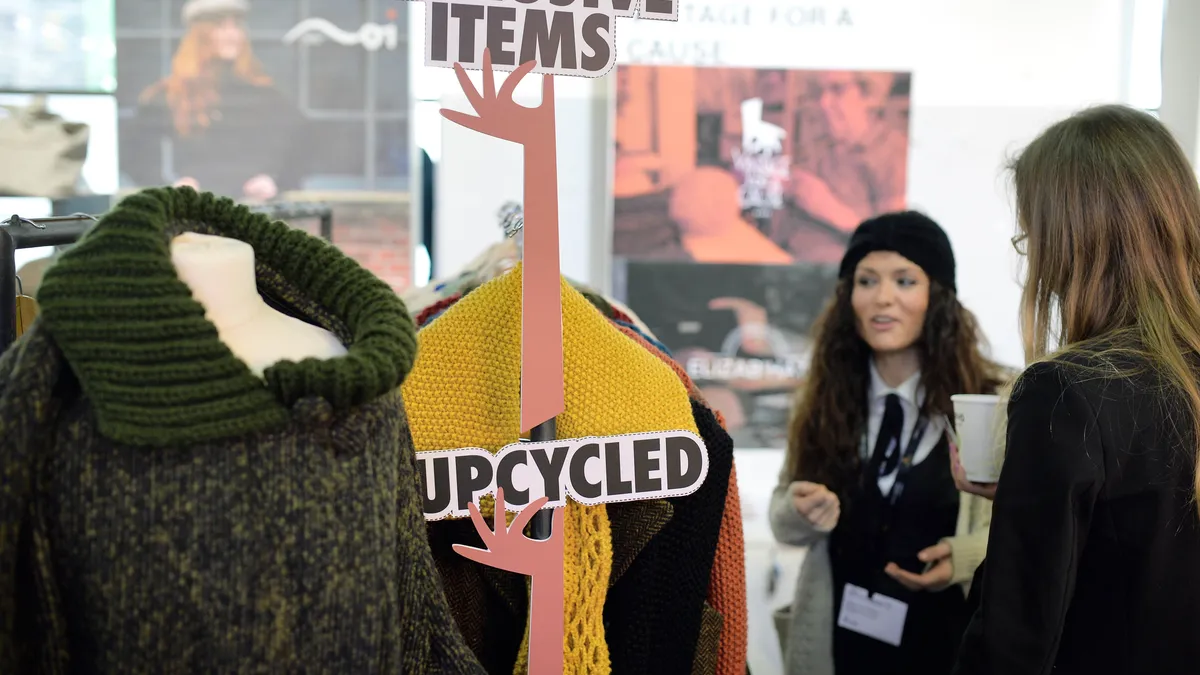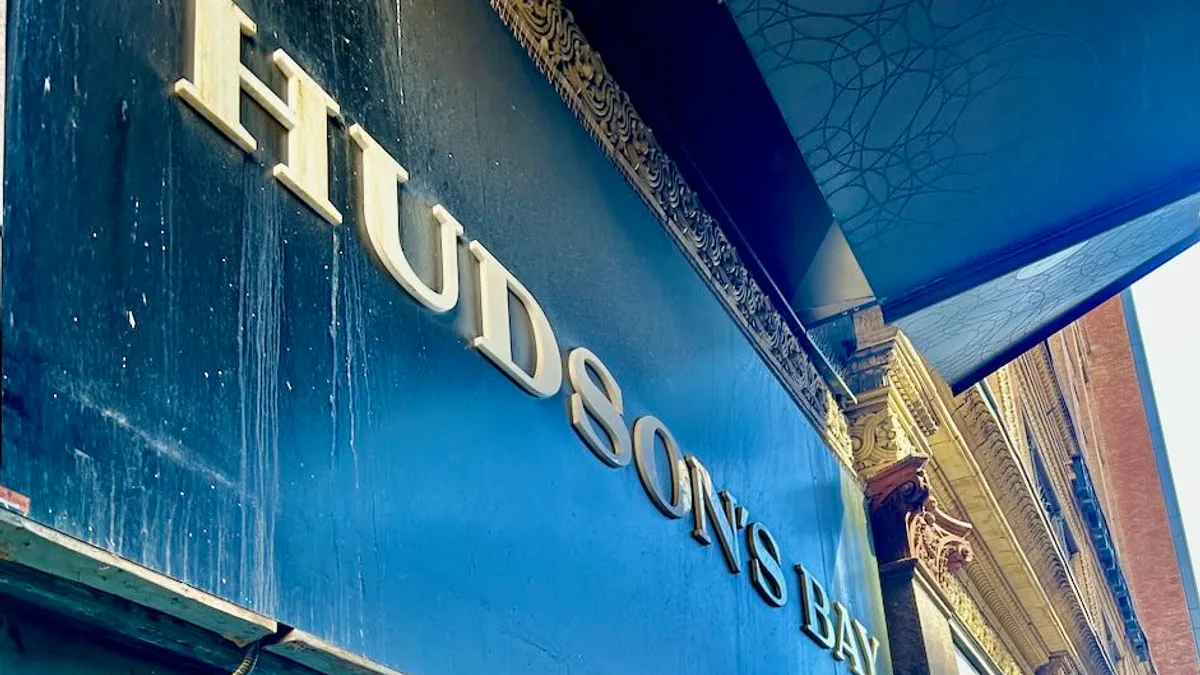Sustainable fashion is inherently an unnatural pairing. Seasonal trends urge shoppers to purchase new looks regularly, while eco-friendly living asks them to pare down. A growing number of fashion labels are baking environmental sustainability into their brand ethos — take Patagonia or Reformation, for example — and centering their marketing around how they're bettering their business and the world with eco-conscious practices.
With many consumers reprioritizing how and where they spend their money since the pandemic's onset, they're the ones steering the retail industry toward sustainability, demanding change and voting with their wallets while retailers respond in an attempt to stay relevant. But at the moment, sustainable fashion is typically not affordable for the many and is restricted to premium brands for the few, a June 2021 EY Future Consumer Index found.
On the other end of the price spectrum, cheaper, fast fashion brands like H&M or Forever 21 are virtually incapable of applying sustainability-related messaging considering their vast inventories and large brick-and-mortar footprints.
How can the average retail brand seize on skyrocketing interest in sustainable fashion without dipping into "greenwashing?"
It's a marathon endeavor that isn't without setbacks on the operational and marketing fronts, as more brands have started recognizing the opportunity to differentiate themselves via sustainability while maintaining a competitive price, according to Retail Systems Research's Steve Rowen.
"Historically, retailers have paid lip service around planning to do something about it someday. But someday isn't a day on the calendar," Rowen said. "[Sustainability] doesn't have to be exclusive to the luxury market. That can't be where this remains for the next 10 or 15 years. We don't have enough time for that to continue."
Small, digestible steps
Real action on the sustainability front begins at the top, suggests Tierney Wilson, senior vice president of client strategy and consulting at January Digital. For the environment to become a true business priority, retail executives must commit to the cause and weave it into every level of the company's operations before it becomes the centerpiece of a splashy marketing campaign.
"You're even seeing executive compensation and bonus structures at some large public companies tied to hitting short- and long-term sustainability goals," she said. "I think that is really driven by businesses looking at their own data, evaluating what is important to their consumers and what they need to do to keep those consumers over the long run."
"Being honest about failures or mistakes actually builds more trust with consumers than trying to bury it."

Tierney Wilson
Senior vice president of client strategy and consulting, January Digital
Just as C-suite buy-in can spur a trickle effect behind the scenes, a myriad of positive changes can contribute to a retail brand being more sustainably ethical, per Wilson. Opting for slightly smaller inventory may allow for the use of smaller retail spaces, for example, thus lowering operational costs. Even the seemingly smallest changes can add up over time and across the board, especially at the scale of global companies. The key is to take stock of a retailer's practices, commit to small, realistic steps and succeed at them, as overpromising and underdelivering violates consumer trust.
"Retailers often think the little things don't matter nearly as much, and that demotivates them to do those things," Rowen said.
From there, staying accountable and connecting business objectives and actions to honest marketing goes a long way in aligning a retail brand with sustainability.
Give consumers choice
For some retailers, incorporating sustainability into the mix doesn't have to require massive operational overhauls or investments in infrastructure. Walmart in September 2021 introduced a "Built for Better" section of its e-commerce site, serving up products that are ecofriendly, sustainably sourced, climate-conscious or Rainforest Alliance Certified, among other criteria. The tool lets online shoppers filter results to show products that align with their personal priorities, while ultimately providing a seamless customer experience that could compel them to return.
"I think that's a first step in putting sustainability messaging at the forefront, for consumers to be able to make decisions on the everyday products that they would be buying anyway. It gives them choice," Wilson said. "It's naive to think that all consumers are shopping in that manner, but I think by just having the option, over time, you will see more and more consumers shopping in that manner."
While sustainability is becoming a bigger factor in consumers' purchasing decisions, value and ease are still the main drivers at the end of the day, per IBM's 2022 Institute for Business Value study. The Walmart example demonstrates how offering choice — without requiring significant consumer behavior change — can potentially make a big difference, especially at the scale of a behemoth like Walmart.
Retail marketers too often presume consumers have too many choices, pushing them to assume that adding yet another layer would overwhelm them, according to Rowen.
"I think where we underestimate shoppers is they can hold two thoughts in their head at the same time," he said. "A smart retailer will figure out how to add one more attribute to the product: its story. Consumers aren't expecting [retailers] to be perfect on the sustainability front, but offering just a few options is a good start, at least for now."
If shoppers were given options that compare apples to apples, pricewise, many would elect to buy the more responsibly sourced product, according to Rowen. Marketing is an increasingly key part of this formula, because if retailers don't communicate their efforts externally, shoppers might never realize they have an option to make sustainable choices in the first place.
"Consumers drive trends because they vote with their wallet. But they [have to] have the choice and they have to know the stories. If a retailer has a story to tell, I urge them to tell it better, sooner, more succinctly and louder," Rowen said.
It's a marathon
While there's no doubt sustainability is important to some consumers, brands that hop on the trend haphazardly will face the ire of increasingly discerning consumers. All brands, but especially those with global footprints or are just beginning to take steps toward more eco-conscious practices, must walk a fine line regarding how they message sustainability.
"I think it's like anything else in business, you have to establish your short-term goals and hold yourself accountable to hitting those. Consumers see through when you don't," Wilson said. "Being honest about failures or mistakes actually builds more trust with consumers than trying to bury it."
"I think where we underestimate shoppers is they can hold two thoughts in their head at the same time. A smart retailer will figure out how to add one more attribute to the product: its story."

Steve Rowen
Managing partner, Retail Systems Research
On the fast fashion front, marketing around sustainability is a tougher, long-term battle. Flipping a brand's message too quickly could be a death knell, as savvy consumers know the toll fast fashion's massive inventories and production models have on the environment. Completely switching up production in favor of more sustainable methods isn't typically a realistic option, per Wilson, who suggests starting small. Fast fashion brands, in particular, must be honest about where they can reasonably make sustainable changes, she said. Tweaking packing, trimming the number of styles offered or reducing the quantity produced are simple methods of lowering environmental impact, which brands can in turn message back to customers.
"Fast fashion is a key area where it's important they set goals that are realistic for their business, and they message those goals to their customer and then report out on how they're tracking to those goals," Wilson said. "If fast fashion brands start doing that — and we're seeing some do that out of necessity because their customers demand it — it will move the whole sustainability industry forward and we'll ultimately be in a better place from a humanity perspective."
Storytelling connects the dots
Still, some marketers are hesitant to place too much emphasis on sustainability in their messaging, even as they adopt more eco-conscious operations. Edited Chief Marketing Officer Juliana Prather suggests that uncertainty may stem from a convergence of a "riddle" of concerns, including pandemic disruptions, supply chain issues and quickly changing consumer demands. Careful planning, enacting small changes and using data to inform decision-making and reduce risk are the top steps for retail brands to stay in line with their sustainability goals, she says.
For Rowen, communicating even the smallest of positive stories — alongside taking real strides to do better — can help connect the dots between a retailer's objectives and their marketing.
"No matter what you do, haters gonna hate," Rowen said. "If you do something good in this world, at scale, to give consumers a better option at the same price or a similar price point, I think that's a story worth telling. That's a good place to start."























